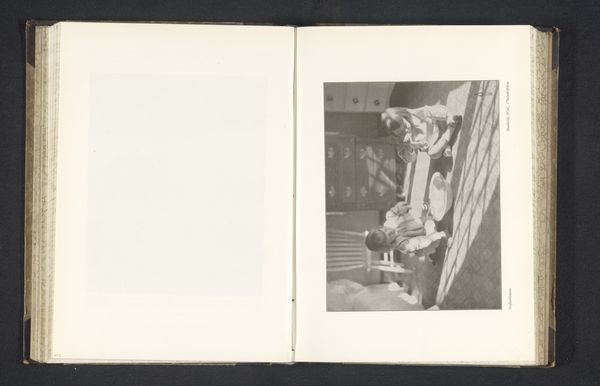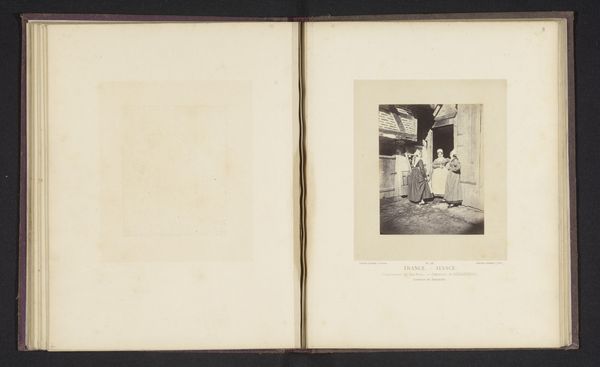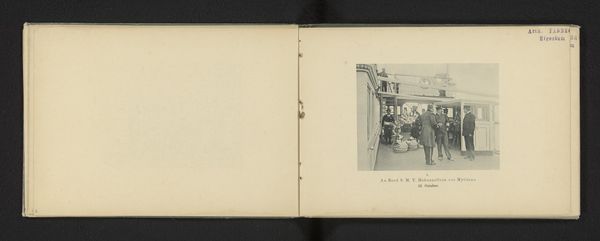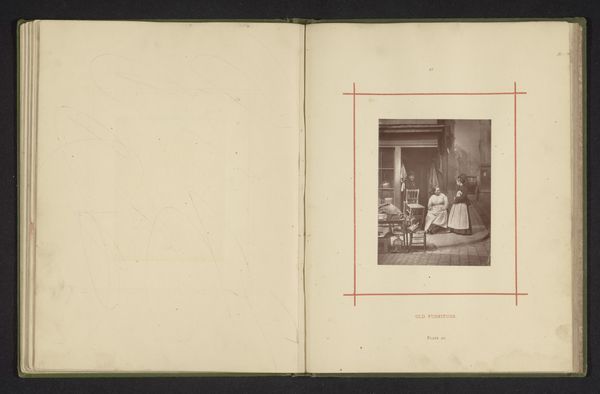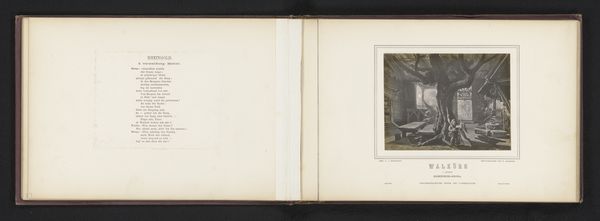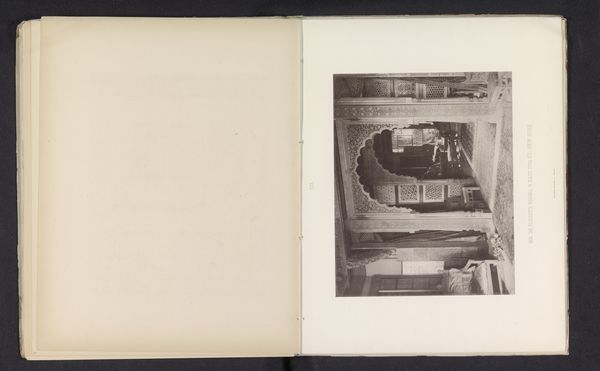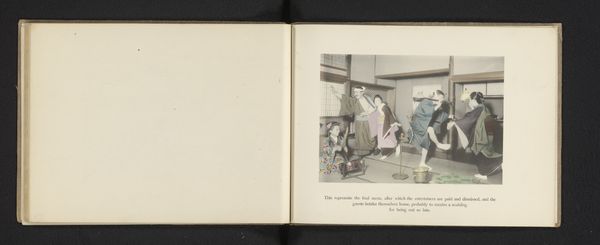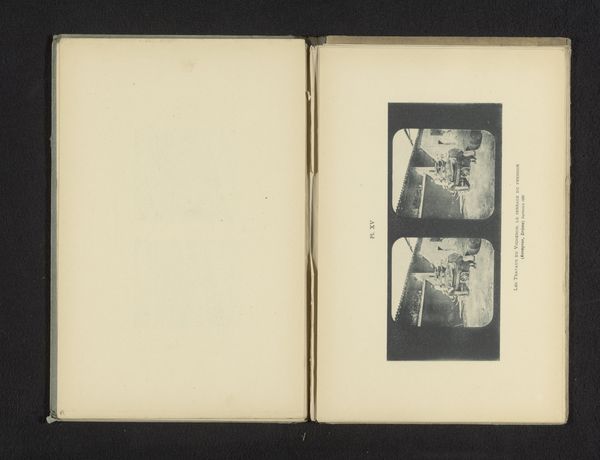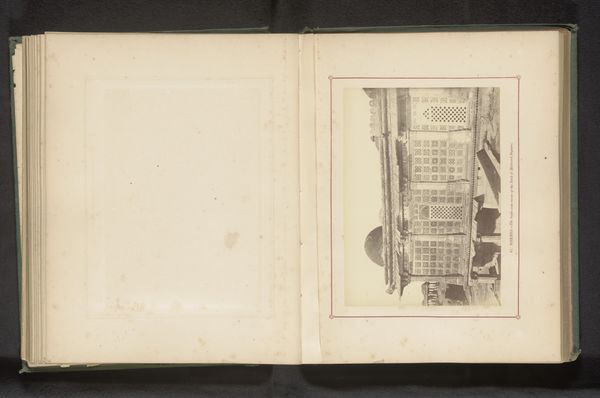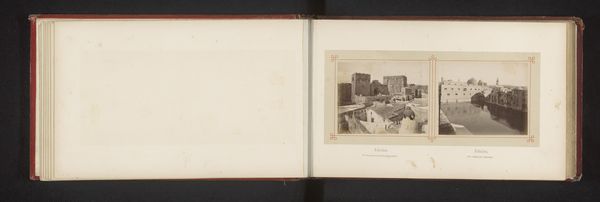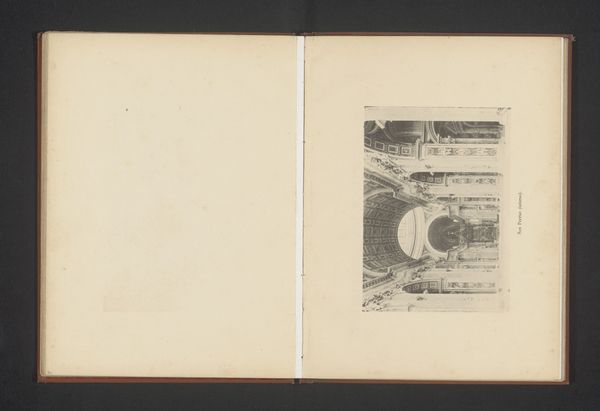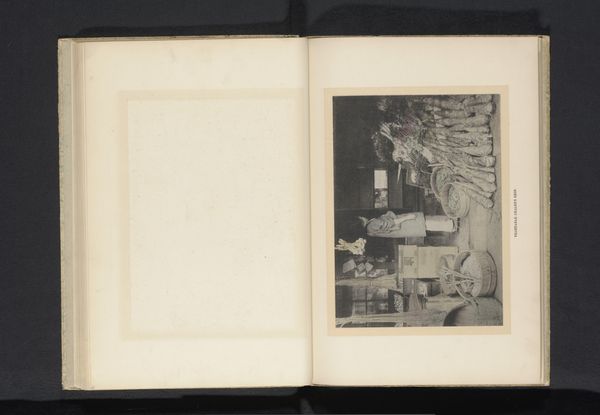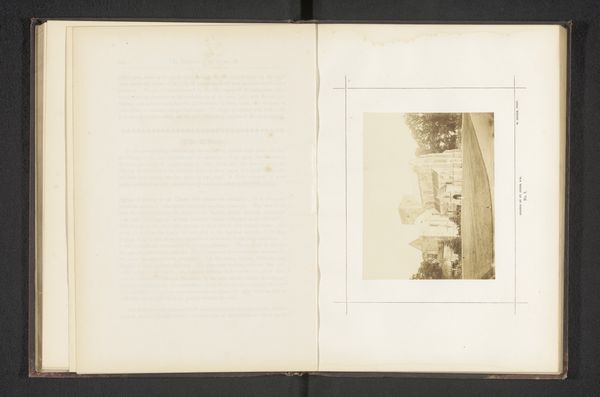
Dimensions: height 105 mm, width 151 mm
Copyright: Rijks Museum: Open Domain
Editor: This hand-colored albumen print by Kōzaburō Tamamura, titled "Three Women Working Silkworms in Japan," dating around 1895-1905, is quite striking. The scene feels so intimate and domestic. What's your interpretation of the photograph? Curator: This photograph gives us a glimpse into the complex labor systems that sustained the silk industry in Japan, a crucial economic sector at the time. Note how these women, presumably working-class, are rendered almost anonymously through a composed and aestheticized gaze for Western consumption. It subtly points to the intersection of gender, labor, and cultural representation. What does it say about their agency? Editor: So, it's not just a depiction of a traditional craft but also touches on issues of representation and perhaps even exploitation? Curator: Precisely. The serene, almost romantic portrayal belies the possibly harsh realities of their labor. The artistry lies not only in the photographer's skill but also in the way it constructs a certain narrative about Japanese culture for an external audience. How does this idealized representation differ from, say, documentary photography focusing on labor rights? Editor: That's a great point. It highlights how images can be both beautiful and carriers of complex social and political meanings. I didn't initially think about the photographer's potential bias in presenting the scene. Curator: Thinking critically about who is telling the story and for what purpose opens up these older images. They invite us to challenge conventional narratives and explore layers of historical context. It changes the experience of art!
Comments
No comments
Be the first to comment and join the conversation on the ultimate creative platform.
